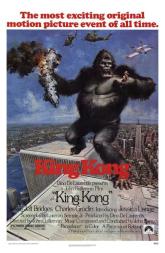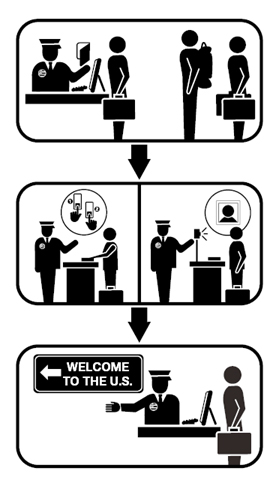
Poetry from Row 16A on US Airways #952 (the trip home)




Today for the first time I had the pleasure of mailing Ronald Reagan’s face through the U.S. postal system. Three times, in fact. Appropriately enough, the stamped envelopes contained rebate forms for my 2004 TurboTax software. Very supply-side economics. Let the rebates come trickling on down!
Reagan–who was arguably an amnesiac even before he had Alzheimer’s–makes for an odd stamp. I was reminded of one of the sidebars in Douglas Coupland’s Generation X: Memory is not a document.
Meaning, it’s not permanent. It’s not evidence. It’s not even there. Reagan exemplified this. The whole thing is very Pynchonesque. A Reagan stamp, that is. Like there’s this vast underground postal empire giving these stamps a meaning that exists above their actual 37 cent value. W.A.S.T.E.
I remember in the early nineties when the Elvis stamp came out, there was a debate whether it should depict the young hip rocker Elvis or the older sequined Elvis (younger won out). If we had a debate about the Reagan stamp, what would the two alternative versions be? Obviously the presidential version. But what about the young homoerotic Kings Row Drake “Where’s the rest of me?” McHugh? Which would be more appropriate?
I’m a huge fan of Lost–airplane crashes, polar bears, a non-Hodgkins-lymphoma-free Jack, aka Charlie Salinger–I mean, what’s not to like? So somebody suggested I check out Alias, another show by the creator of Lost, J.J. Abrams.
Months, I guess, later I finally watch the first episode of the first season of Alias. And here’s where the cog dis kicks in: as Sidney (Jennifer Garner) is telling her fiance about her secret life in the CIA, Cat Stevens’s song “Trouble” begins playing on the soundtrack.
I’m sorry, but there’s only one set of visual images that I could ever possibly associate with “Trouble” and that’s Harold’s last fake suicide in Harold and Maude as he drives his jaguar hearse over a cliff, escaping from the car at the last moment. It’s one of the most poignant cinematic moments from the seventies.
And here the song is, hijacked for a spy story, bearing no relation to the narrative, the characters, or anything else on my television screen for that matter.
Trouble, oh trouble, can’t you see, you’re eating my heart away and there’s nothing much left of me. Except secret agents and double-lives and lipstick GPS units.
From Boing Boing via Stay Free, news of the Starbucks Delocator, a database which offers up the nearest non-Starbucks coffeehouse or cafe near any given location. My own local hangout–Summit Coffee–wasn’t in the database yet, so I’ve added it. You have to love Summit–I wrote most of my dissertation there it seems.
Again, that’s the Starbucks Delocator. Get the google on and add a link to the Starbucks Delocator on your own blog.
Damn, the longer I go without posting, the harder it is to get back to posting…Good thing this isn’t my full-time job.
But here’s a thought that I did want to get out there: last night I watched the classic 1976 film Network, and the movie doesn’t seem like satire of the television industry so much as an uncanny prediction of where things are heading.
Network news divisions being driven by entertainment value? Already done. Laughable, undeniably biased newscasters? No problem. Crazy newscasters? Been there, done that.
And what about reality TV? In Network the network airs the “Mao Tse Tung Television Hour,” showing real-life footage of bank robberies, kidnappings, assassinations, and so on. How different is this from what we have now? America’s Most Dangerous Car Chases. When Animals Attacks. And the mother of them all: COPS.
Oddly, as John Langley, the creator and executive producer of COPS, admits in an interview on Court TV: Talk, he used to be an “academic.” Is this my future, I wonder?…
Recently I was stuck in a slow-moving checkout line in Lowe’s. To pass the time I began reading–and finished–five different
After reading all the books, I realized that, without a doubt, Bob the Builder is gay. Sure, he has that sexy business partner, Wendy, but I think it’s safe to say that their relationship is strictly platonic. There’s not even a hint of electricity between the two of them. And how many big strong construction workers have a pet cat–one that’s named Pilchard? One of the books shows Bob relaxing at home after a hard day on the job, in a neat little bungalow, sipping tea. Very butch, indeed. Actually, with that flannel shirt and all those tools, very Village People.
After poking around online I discovered that I’m not the only one who’s made this connection. Ananova reports that in Britain (Bob’s home country) Bob has become a gay icon.
No news reports of that happening in the U.S. yet…
Just a quick post, a placeholder, really, to say that I’m still alive. July was crazy and August looks to be crazy too. More on why later…
In the meantime, for your viewing pleasure and in honor of my nephew, who may or may not soon appear in a nationally-televised Cheerios commercial, please enjoy this classic Cheerios advertisement.
I’ve been a devoted follower of The Sopranos ever since I borrowed the entire first and second seasons on VHS from a friend, back in 2000. I’ve managed to see every episode since, even without having HBO, by begging, borrowing, and sometimes just showing up unannounced, uninvited at the right place at the right time. At times my desperation to see the show bordered on mania. Before Season Four began I even had a nightmare in which Tony Soprano came to me, snarling in my face, spit flying everywhere, yelling, Why the f**k don’t you have HBO? You better get it, you sad little freeloading f**k.
Ah, gotta love the sinner and hate the sin.
Now, with the fifth season in full swing, I’ve been thinking, is it really all that? Would the world end if I never saw the show again? Up until last Sunday’s episode I would have said yes.
But the episode–Irregular around the Margins–aired and blew me away. Without a doubt, it was the best episode this season and possibly the best of the past couple seasons.
There are two reasons for this. The first is that the show was back to focusing on family rather than crime. After all, The Sopranos is ultimately a family drama. The rest is just window dressing. Too often this season ancillary tensions between ancillary characters have been competing with the more compelling storylines. The brewing war between Johnny Sack and Little Carmine, the sociopath Feech and his territorial piss-posts–these plots are at best distracting and at worse like watching a bunch of local villagers squabble over a goat while outside the village gates the Four Horsemen of the Apocalypse silently annihilate entire civilizations.
Face it, Tony and his troubling familial relationships–the civilization of Tony–are what we come to watch: Tony’s disintegrating relationship with his wife, his distant relationship with his children, his antagonistic relationship with his sister and uncle, and now, with this episode, his uneasy reconciliation with his own nephew, Christopher, whose fiancee, Adriana, Tony had nearly slept with.
The writing of this episode was so hewn, the symbolism and allegory so finely wrought, that I think it brings into relief why cultural critics should pay attention to The Sopranos. And this depth and richness is the second reason why the show blew me away. Its incest plot and the struggle between generations–Tony versus Christopher, whom Tony is grooming to be his successor–transforms the show into something reminiscent of a Greek or Roman tragedy.

In fact, I am reminded of Goya‘s disturbing masterpiece Saturn–a haunting painting of the Roman titan Saturn devouring one of his children. According to one myth, Saturn was later thrown from the heavens by Jupiter, another one of his children. No wonder Saturn wanted to devour them. But myth aside, the painting is of course allegorical. It doesn’t seem to be about war in the heavens so much as an awakening of primal savagery, the collapse of civilization and the rise of nothing but rage, revenge, and unrepressed urges.
Tony Soprano embodies this struggle between savagery and civilization–and the rise and fall of one or the other is inextricably linked to the destruction or rejuvenation of his own family. Tony recognizes this at some level and even seeks Dr. Melfi’s help. It’s a “breakthrough,” Melfi tells Tony, to recognize this struggle and even attempt to avert it.
But can he? One aspect of David Chase’s (the creator of The Sopranos) worldview crystalized in this episode, namely that we cannot control our bodies. Our bodies betray us. We see this repeatedly in “Irregular Around the Margins” in the three principle characters of the episode, Tony, Adriana, and Christopher.
Consider each character separately:
Tony
Tony has some sort of cancerous cyst removed from his scalp; this melanoma, unpredictable and unsettling, is what makes him feel “irregular around the margins.” It’s as if he cannot trust his body anymore. There’s also Tony’s casual drug use, which he could control if he tried, but he doesn’t. When Adriana offers him a line of cocaine, he smiles and says, “I won’t say no.” And finally, there’s his libidinal urge, his bodily lust for Adriana that he only keeps in check by luck. They’re interrupted right at the moment when they could kiss for the first time.
Adriana
Like Tony, Adriana is a casual drug user. Well, probably more than casual. The reason she and Tony are in a car accident in the middle of the night in Dover, New Jersey, is because that’s where her dealer is. More significantly, Adriana is diagnosed in the episode with IBS–Irritable Bowel Syndrome. Meaning, she can’t control her bowels and she’s beset with painful diarrhea. Her body, quite literally, is a pile of shit.
Christopher
Last season Christopher made an admirable recovery from a destructive heroin habit. The first four episodes of the fifth season Christopher had been stone cold sober. On edge and quarrelsome, but sober–no booze, no drugs, nothing but cigarettes. It doesn’t last. Hearing the rumor that Adriana had been out in Dover having sex with Tony when the accident occurred–a false rumor, it turns out, although maybe the car wreck was the only thing that stopped the liaison from happening–hearing this rumor, Christopher throws Adriana out and quickly grabs the nearest alcohol he can find, a bottle of Stolichnaya vodka Adriana had hidden in the freezer. Once again, in Christopher’s relapse we find a body that cannot control itself, an urge that cannot bear repression.
Alongside Goya’s Saturn, there is another cultural reference this episode calls to mind. It’s the car wreck–I can’t help but think of the last lines of William Carlos William’s damning critique of American postwar culture, the poem “To Elsie.” The poem begins with the ambiguous line,
The pure products of America
go crazy…
And it ends with these despairing verses:
the stifling heat of September
Somehow
it seems to destroy usIt is only in isolate flecks that
something
is given offNo one
to witness
and adjust, no one to drive the car
No one to drive the car, Williams says. No one is in control, The Sopranos says.
Lately I’ve been reading up on the history of the World Trade Center. It’s easy to forget, in this post-9/11 world, that for most of their life the Twin Towers were reviled. One of the most prominent critics was Wolf Von Eckardt, the Washington Post‘s eminent architectural critic. Upon seeing Minoru Yamasaki’s model for the buildings in 1966, Von Eckardt called the World Trade Center a “fearful instrument of urbicide.” Its two towers, he wrote, “just stand there, artless and dumb, without any relationship to anything, not even to each other.”
Von Eckardt calls the scale of the Twin Towers “utterly inhuman.” Maybe that’s why they eventually gained acceptance–if not from the architectural community, then at least from the popular media. What else could King Kong climb, except for something that was utterly inhuman?
 Click for larger image
Click for larger imageThe 21st century will be the century of the fugitive. Not because fugitives are proliferating, but because they are disappearing. And not disappearing in the way that fugitives like to disappear, but disappearing because they simply won’t exist. Technology won’t allow it. In the near future fugitives will occupy the same place in our collective consciousness as cowboys or pirates. And just as the Western film genre dominated the mid-20th century — while agribusiness was at the same time industrializing the west, making the cowboy superfluous–our new century will be dominated by cultural forms which star fugitives.
There is something about fugitives we psychologically crave, and if they can’t exist, then we will invent them on our own.
I’ve been thinking about fugitivity lately because I’ve been closely following the case of Eric Rudolph, the alleged Olympic bomber who disappeared into the mountains of western North Carolina in February 1998. Rudolph became the target of the largest manhunt in FBI history, and it seemed as if he had vanished in a poof of smoke until May 31, 2003, when he finally surrendered himself after years of hiding.
 Rudolph, seen here in a composite FBI sketch, reportedly told a man in July 1998 — when Rudolph emerged briefly for a day before disappearing again for another five years — that “Where I’m hidden, they’ll never find me.”
Rudolph, seen here in a composite FBI sketch, reportedly told a man in July 1998 — when Rudolph emerged briefly for a day before disappearing again for another five years — that “Where I’m hidden, they’ll never find me.”
And it was true. Rudolph gave himself up freely, arrested near a dumpster behind a Save-A-Lot supermarket, in Murphy, North Carolina. By most accounts, Rudolph was simply weary of hiding where he couldn’t be found.
Now, in this Patriot Act-world of digital, synchronized communication we have what amounts to infinite tracking, deep searching, and persistent indexing. I don’t agree with Rudolph’s political beliefs and I abhor his alleged methods. But there is something achingly diminishing about a captured fugitive. It’s as if the world suddenly got smaller. Now even Rudolph is now subject to the same rules as the rest of us. The U.S. District Court for the Northern District of Alabama has even set up a listserv for U.S. v. Eric Robert Rudolph (Criminal No. 00-422-A) that allows you to receive an email message “whenever a document (motion, order, etc.) is filed in each case.”
And so, fugitivity gives way to documentation. It’s a trend you’ll be seeing — and experiencing — more and more…
 Illustration from the Department of Homeland Security’s US-VISIT Brochure.
Illustration from the Department of Homeland Security’s US-VISIT Brochure.Today I discovered that I am two people away from knowing Jodie Foster, which, technically, because of John Hinckley, Jr., puts me ever closer to Ronald Reagan. A friend in Philadelphia studied for a time under John Douglas, the former FBI profiler who was a consultant for Jonathan Demme’s Silence of the Lambs. Douglas gave Foster tips on how exactly one gets into the mind of a serial killer. The tips worked. Jodie Foster even thanked Douglas in her acceptance speech for the 1992 Best Actress Academy Award.
Incidentally, Douglas told my friend that the morning Hinckley shot Reagan in 1981 he (Hinckley) woke up with two plans in his head. The first plan was to assassinate Reagan in order to impress Foster, then a student at Yale University. The alternative plan was to head to National Airport (ironically, now known as Reagan National), hijack a plane, land it on the green at Yale and exchange all his hostages for Jodie. Then they’d fly off into the sunset. Hinckley was weighing both plans equally, but finally chose the first plan, simply because it was more convenient.
In LA this week I met a former animator for Disney who now designs murals and sculptures for the Disney Stores. Right now he’s working on a Goofy sculpture for the Disney Store in Paris. He told me that every detail of the three-dimensional Goofy—the length of the ears, the diameter of the eyeballs, the size of the hands—is measured by a precise caliper to ensure that Goofy is perfectly proportioned. Quality control, he called it. There’s a danger of a kind of perspective drift in which over time Goofy’s ears, for example, could slowly become exaggerated, growing ever larger. Eventually Goofy would no longer be recognized as Goofy. The same thing happened with Mickey Mouse. The first twenty or so years of his life Mickey was allowed to evolve, from a very obvious caricature of a blackface minstrel to the wide-eyed, decidedly non-Rat-like mouse we know today, the version that Disney so assiduously protects with a brigade of lawyers and a shield of special-interest trademark legislation, passed by Congress solely for the sake of Disney.
Today in LA I talked to a city engineer. The palm trees here, he says they’re infested with rats. Up in the dead fronds the rats build nests and at night you can see silhouettes scurrying up and down the trunks. So there on Rodeo Drive, high up above the shoppers and tourists and stars, a pack of rats look down from their palm tree homes, lording over the city of angels.
The other day: from my hotel in Rosslyn, Virginia, there is a spectacular view of Washington, DC. It’s just across the river. Nothing to do in Rosslyn itself though, so I watch some television. The local NBC affiliate closes the 11 o’clock news with a feature on Anthony Edwards, whose last appearance on ER was Thursday night. I guess he took a long time leaving? Apparently dragged out over several episodes? One of the anchors asks the reporter, So, is he really gone now? We keep thinking he’s left the show, but there he is again.
Another anchor chimed in then, part of the wrap-up banter every news show must end with, “Yeah, just like Franco.” And then the entire group of newscasters–the playfully flirty male and female anchors, the enthusiastic sports anchor, and even the blonde weatherman, they all laugh. As if they were thinking the exact same thing themselves, “Yeah, just like Franco.”